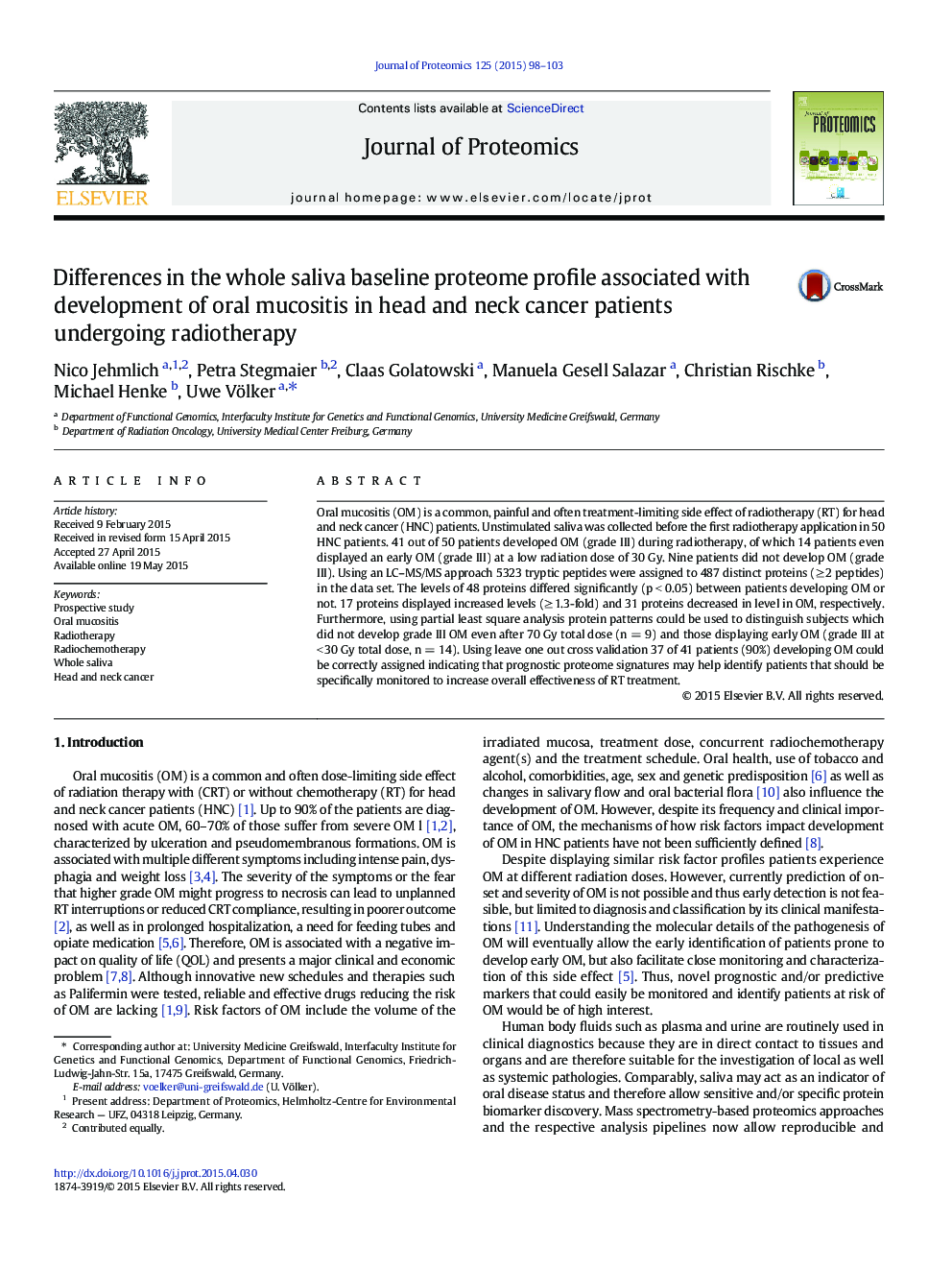| کد مقاله | کد نشریه | سال انتشار | مقاله انگلیسی | نسخه تمام متن |
|---|---|---|---|---|
| 1225551 | 1494755 | 2015 | 6 صفحه PDF | دانلود رایگان |
• Screening of saliva proteome of head and neck cancer patients for signatures of radiation-associated oral mucositis (OM)
• The analysis revealed the correlation of the abundance of 48 of the 487 proteins identified with the risk of developing OM.
• Whole saliva protein profiles at baseline of radiotherapy might allow identification of patients prone to adverse reactions.
Oral mucositis (OM) is a common, painful and often treatment-limiting side effect of radiotherapy (RT) for head and neck cancer (HNC) patients. Unstimulated saliva was collected before the first radiotherapy application in 50 HNC patients. 41 out of 50 patients developed OM (grade III) during radiotherapy, of which 14 patients even displayed an early OM (grade III) at a low radiation dose of 30 Gy. Nine patients did not develop OM (grade III). Using an LC–MS/MS approach 5323 tryptic peptides were assigned to 487 distinct proteins (≥ 2 peptides) in the data set. The levels of 48 proteins differed significantly (p < 0.05) between patients developing OM or not. 17 proteins displayed increased levels (≥ 1.3-fold) and 31 proteins decreased in level in OM, respectively. Furthermore, using partial least square analysis protein patterns could be used to distinguish subjects which did not develop grade III OM even after 70 Gy total dose (n = 9) and those displaying early OM (grade III at < 30 Gy total dose, n = 14). Using leave one out cross validation 37 of 41 patients (90%) developing OM could be correctly assigned indicating that prognostic proteome signatures may help identify patients that should be specifically monitored to increase overall effectiveness of RT treatment.
Figure optionsDownload high-quality image (189 K)Download as PowerPoint slide
Journal: Journal of Proteomics - Volume 125, 1 July 2015, Pages 98–103
